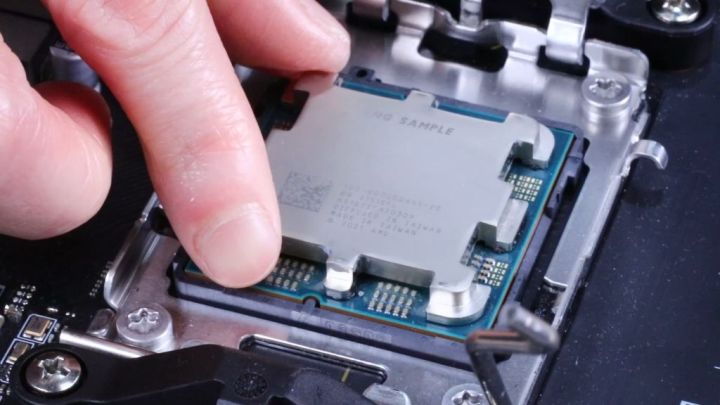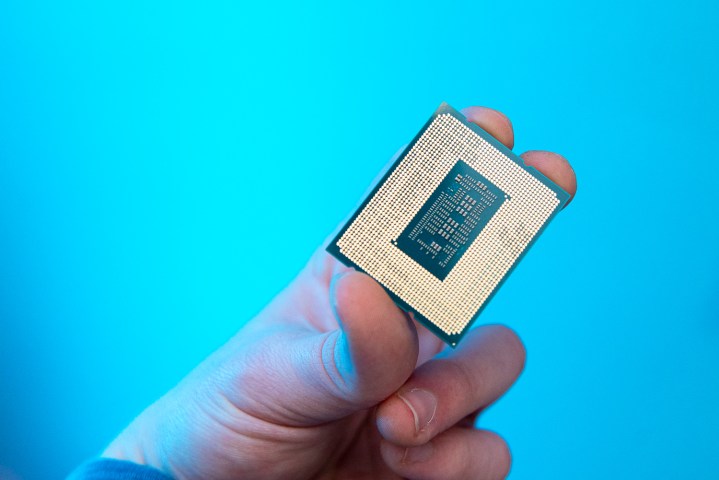Ryzen 7000 is due later this year, and we’re expecting a pretty tight race on the desktop between it and Intel’s upcoming Raptor Lake CPUs. But based on what we’ve seen so far, we’re not expecting either company to achieve total victory with these new CPUs.
However, it could be a very different story for the best laptops. Based on what AMD and Intel have disclosed so far, there’s very good reason to believe Ryzen 7000 will give AMD the upper hand when it comes to laptop performance thanks to significantly improved efficiency with Ryzen 7000. Meanwhile, Intel’s upcoming Raptor Lake CPUs aren’t expected to improve efficiency significantly, putting Team Blue in a bad position for the near future.
Ryzen 7000 is already looking good for mobile

Although the info we’ve gotten from AMD concerning Ryzen 7000 is largely about desktop CPUs, it’s very much applicable to the upcoming mobile CPUs which are slated to launch in 2023, as both Ryzen 7000 desktop and laptop CPUs use the same Zen 4 architecture.
The key things AMD is promising with Ryzen 7000 desktop CPUs are 15% higher single-threaded performance, 35% higher multi-threaded performance, and most crucially, 25% higher performance per watt. This last point is by far the biggest hint we have regarding Ryzen 7000 mobile performance. Power consumption in laptops isn’t changing, so we can mostly treat 25% more performance per watt as 25% more performance.
Considering the differences between desktop and laptop CPUs, it looks even more positive for Ryzen 7000 mobile. Desktop CPUs tend to be less power efficient than laptop CPUs, because desktop CPUs consume more power to reach high levels of performance. If AMD had tested a mobile CPU, it’s highly likely the company would have touted a figure higher than 25%.
When it comes to improving performance for mobile CPUs, a simple increase in power efficiency is king. Laptops have limited power and thermal profiles, so being able to do more at any given wattage is really good. It’s why Ryzen 4000 and Intel 12th-gen were significantly better than their predecessors.

When it comes to news specifically about mobile CPUs, AMD has been tight-lipped. There was one important announcement recently, though — namely, the confirmation that Ryzen 7000 mobile will feature two different CPU families: Dragon Range for high-end laptops and Phoenix Point for the upper-midrange and below. At the company’s Financial Analyst Day event, AMD also confirmed Phoenix Point would be on the 4nm node and would feature RDNA 3 graphics. Given that Phoenix Point is a sub-45-watt CPU, it probably has 8 cores, just like Ryzen 4000, 5000, and 6000 mobile CPUs.
But what about Dragon Range? On the surface, it may appear that Dragon Range is just a powered-up version of Phoenix Point. But if we’re to take AMD’s word for it, Dragon Range might be something much more.
AMD claims it aims to have the “highest core, thread, and cache ever for a mobile gaming CPU.” Unless AMD wants to pretend Alder Lake HX simply doesn’t exist, that means Dragon Range must have 16 cores in order for this boast to make any sense. Dragon Range also uses regular DDR5 instead of the efficient but slower LPDDR5 that Phoenix Point uses.
Raptor Lake doesn’t look like a big mobile upgrade

When Alder Lake launched in late 2021, it brought Intel back to parity with AMD. New 12th-gen CPUs power basically all of the high-end gaming laptops and lower-power Alder Lake CPUs dominate the premium segment. Alder Lake isn’t as efficient as Ryzen 6000, but it’s efficient enough to be competitive, and it’s the leader in single-threaded and multi-threaded performance.
But things are probably pretty bleak for Intel in the near future. Intel does hold the lead in single-threaded performance, but this metric is becoming less and less important with each new generation. Since Ryzen 7000 promises a big performance improvement across the board, Intel stands to lose ground if the company can’t match AMD’s pace. Unfortunately for Intel, it looks like that’s exactly what’s going to happen.
Intel’s upcoming Raptor Lake CPU is basically a refresh of Alder Lake that adds eight E-cores. It might also feature some architectural tweaks and larger cache, but that’s where the magic stops. Crucially for Intel is the fact that Raptor Lake is on the same 10nm node as Alder Lake. It’s unlikely that Raptor Lake will deliver any significant efficiency improvements, which Intel desperately needs for its lower-power CPUs to not only beat Ryzen 6000, but to stand a chance against Ryzen 7000 Phoenix Point APUs.
Things don’t look so good at the high end either. While eight more E-cores sounds impressive, these E-cores aren’t very fast, even if they are efficient. Without a node improvement to go hand in hand with an increase in core count, it’s likely Raptor Lake will need more power to use all 24 of its cores, which means efficiency could go down (a terrible thing for laptops). In an environment where efficiency is king, can 24 core Raptor Lake really stand up to 16-core Dragon Range CPUs? It’s an uphill battle for Intel, even if Raptor Lake surpasses our expectations.
Intel still has the market

The one thing Intel can comfortably rely on is its large presence in the industry, which ensures Intel will get more design wins than AMD even if Ryzen 7000 is more impressive. However, every generation that Intel fails to match AMD is another generation that AMD gains market share in laptops. In some segments, AMD is getting dangerously close to achieving parity with Intel. In 2019, AMD only had 15% share in the gaming laptop market, but in 2021, it reached 32%. AMD is also doing well in other segments, such as the premium laptop segment, where AMD went from 6% share in 2019 to 23% in 2021.
So, if Ryzen 7000 really is as powerful as it looks, 2023 is going to be another difficult year for Intel. It won’t be until mid to late 2023 that 7nm Meteor Lake CPUs arrive, and for Intel’s sake, hopefully it’s not too late by then.




